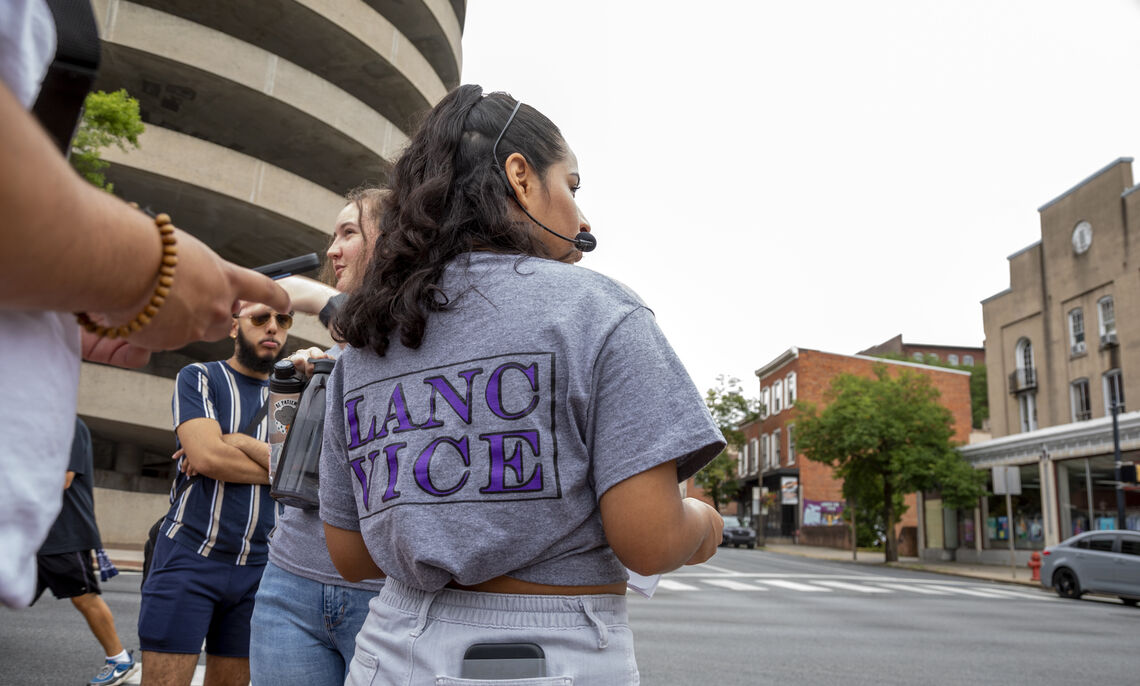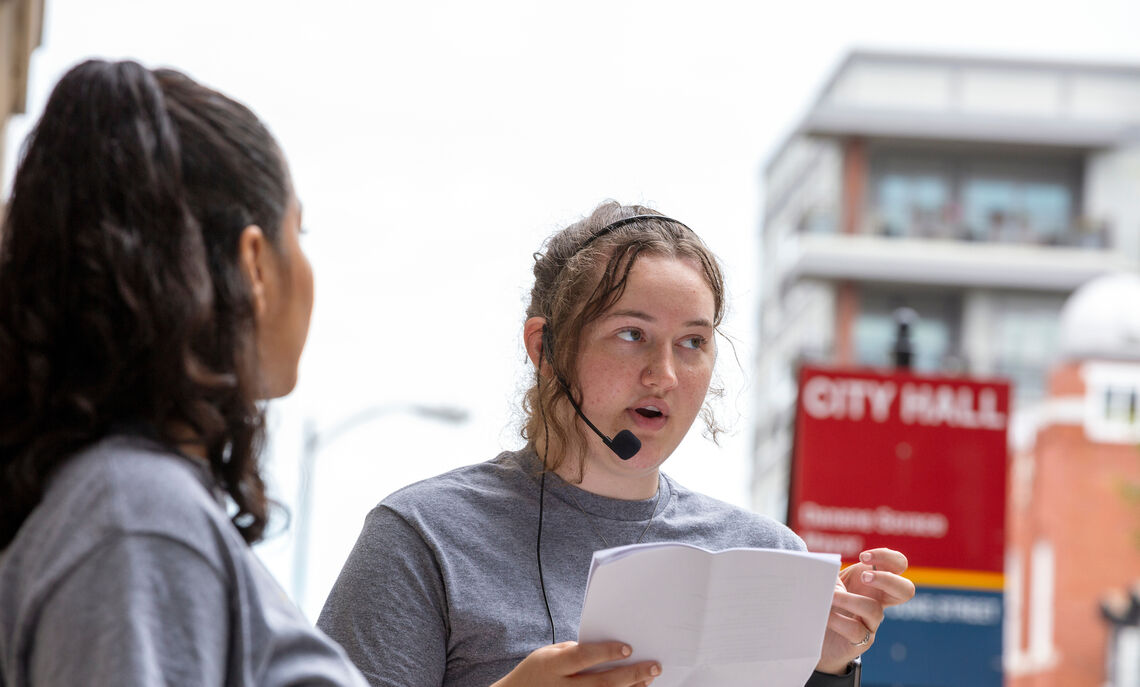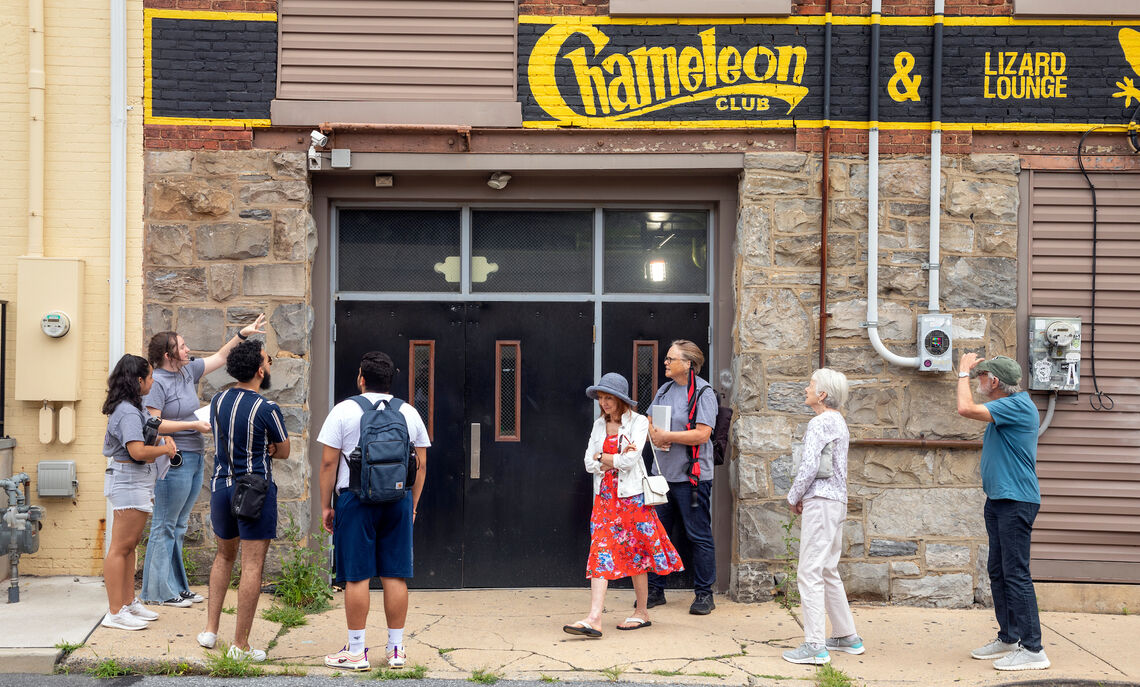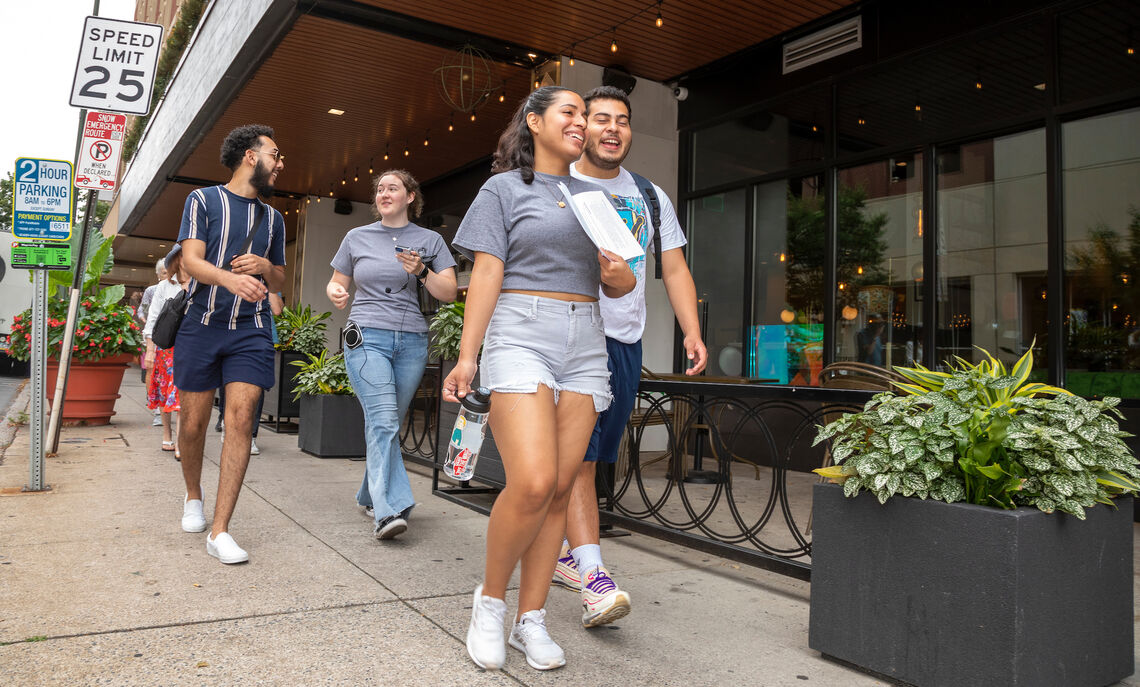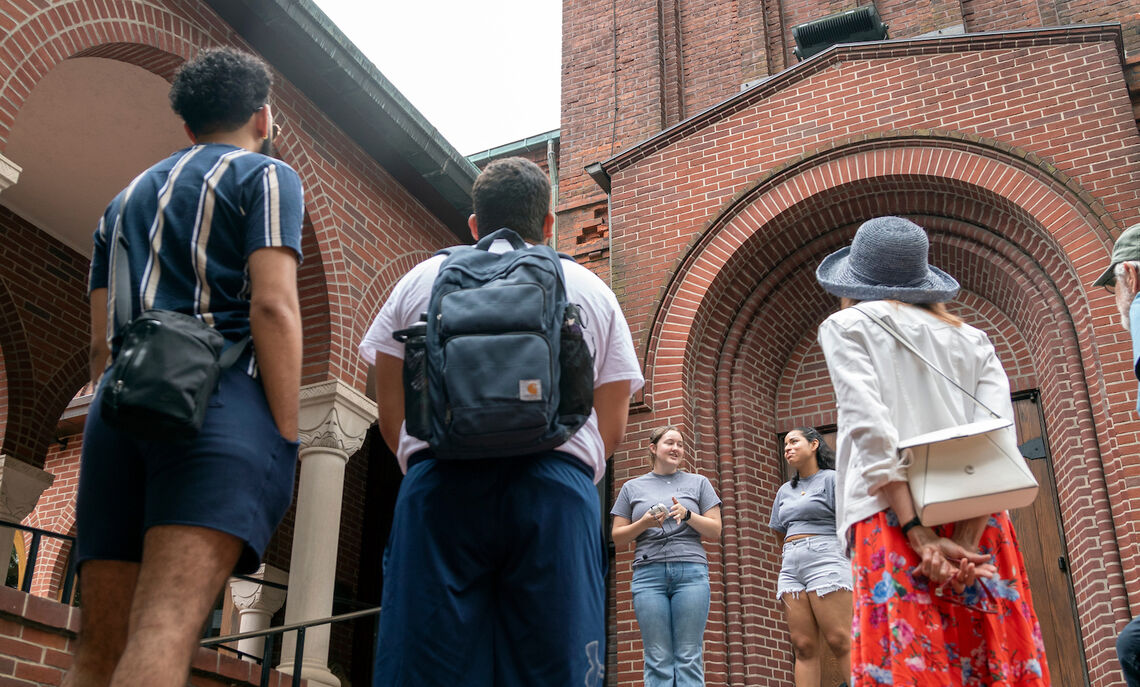F&M Stories
Students Uncover Lancaster's Secret Side
With its bucolic landscape and Amish roots, many visitors to Lancaster assume the region's past is nothing less than virtuous.
But a group of Franklin & Marshall College students is uncovering a more salacious side.
"It's a common misconception that Lancaster was always a conservative, sleepy little city," said rising senior Jillian Barger, of Blairsville, Pa.
Addressing a crowd on the steps of St. James Episcopal Church in downtown Lancaster, Barger began her shift as a tour guide of Lancaster Vice History.
The tour and ongoing research is facilitated by Alison Kibler, professor of American studies and women's, gender & sexuality studies.
Lancaster City, 1913-1917
The year is 1913, and a reform movement is growing in downtown Lancaster.
Galvanized by religious leader Rev. Clifford Twombly, a local group called the Law & Order Society has partnered with national reform groups to investigate vice in the city.
What is vice?
"The definition of vice in 1900 was prostitution*, gambling and liquor violations," said Jayden LaCoe, a rising junior from Wellsboro, Pa.
Walking a tour group to hotels, restaurants and row houses where vice activities transpired downtown, LaCoe and Barger discuss their research into America's progressive era, a time of intense social and political reform.
Posing as traveling salesmen or couples from out of town, investigators from the American Social Hygiene Association talked to 1900s commercial sex workers and madams (brothel leaders) in Lancaster to gather an account of vice in the city.
The resulting report, published in 1914, claimed that investigators found 189 sex workers at 53 different bawdy houses (brothels) throughout the city.
Census records, news clippings and investigator notes uncovered by F&M students reveal misguided efforts to address commercial sex work in the early 20th century.
The campaign did not stop vice in the city, but drove it further underground.
"They simply moved to other venues," LaCoe said.
Harwood Commons patio at F&M, July 2022
LaCoe and Barger are joined by rising seniors Maria Leon Reyes and Lauren Sphar to debrief a busy week of vice history tours.
The students share their hopes for the project's future, including a website to house notes and archival information. They even plan to pitch the tour idea to area historical societies.
"We hand-typed the cursive writing from the notes of an investigator who walked around Lancaster for a couple of years," said Sphar, of Fort Worth, Texas.
A double major in American studies and English literature, Sphar has always been drawn to certain aspects of history, "but I never thought that I would be so invested in the 1910s," she said with a laugh.
For Leon Reyes, the research has complemented her major in sociology and government and minor in women's, gender & sexuality studies.
"My ultimate goal is to spread education," said Leon Reyes, of Orlando, Fla.
She explained that vice reform programs did not address the roots of social problems, but rather, perpetuated inequalities.
"There are pressing issues that continue on to this day, especially within the criminal-justice system," Leon Reyes said. "You want to say that 'Things in the past are in the past.' But history tends to repeat itself, even when you don't address it."
*The term "prostitution" was commonly used in the 1900s. When discussed from a contemporary perspective, the research group prefers the term "sex work" because it has less moral judgment implied and supports the idea of a person's occupation.
Related Articles
December 16, 2025
Research Club Kickstarts Students’ Science Careers
At Franklin & Marshall, a distinctive opportunity for hands-on learning gives students the chance to participate in collaborative research as early as their second week on campus. The Nanobots Research Club meets weekly and aims to help students interested in STEM research connect with each other in a casual, drop-in setting, while learning to use computational chemistry tools
December 16, 2025
F&M Leadership Fellows Prepares Future-Ready Leaders
At Franklin & Marshall, a highly personalized academic experience serves as a launchpad for lifelong leadership through the Franklin & Marshall Leadership Fellows program. These distinctive fellowships exemplify the College’s commitment to supporting students’ development as leaders through focused training and a four-year merit scholarship of $15,000.
December 16, 2025
Art Clark, Jr. Reaches $10 Million in Support for Financial Aid at F&M
Arthur R. “Art” Clark, Jr.’s philanthropy, intended to honor his father’s experience as an F&M student and graduate, has resulted in $10 million in cumulative gifts to support student scholarships and financial aid, with $2.8 million contributed this year alone. In recognition of his generosity, Clark was inducted this fall into F&M’s Kite & Key Circle, which honors F&M’s most generous philanthropists.

